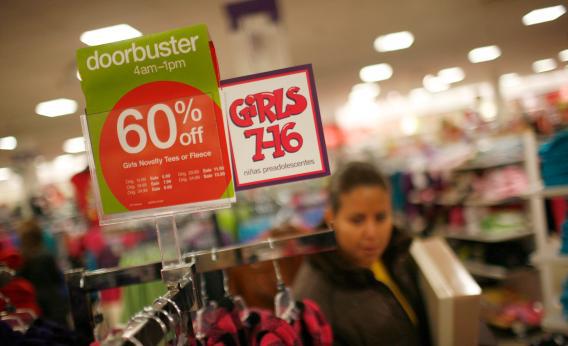I’m not much of a clotheshorse, but one of the aspects of apparel shopping I find particularly annoying is that I’m well aware only suckers pay full price. So whatever stores you like buying from, you need to constantly monitor them for discounts, which is extremely annoying. Of course you can just buy what you need when you need it regardless of whether it’s on sale. But over and above the price/value calculus associated with any particular item, nobody likes (or at least I don’t like) to feel like a mark.
Ron Johnson, the new CEO of J.C. Penney who’s come over from running Apple’s retail stores, is trying to change some of the psychology around this by bringing order and discpline to the pricing procedure:
The new pricing at J. C. Penney is intended to break that mindset, and the company is betting its turnaround on it.
The store has cut prices by about 40 percent versus before the change, and rounded prices to the nearest dollar ($12, say, versus $11.95 or $11.99). After that first tier of regular prices are specials, which last a month rather than a day or a few hours. And Tier 3 is clearance items, which go on sale the first and third Friday of every month, in tandem with many paycheck cycles.
I think it will be somewhat difficult to know if this is even working since some pretty powerful structural forces are working against the entire retail sector, but it’s an interesting idea. A related point here is that stores face time-consistency problems and consumers face collective-action problems when it comes to discounting. Normally a store wants to sell things at a high price, but the longer products sit on the shelves, the more sense it makes to offer them at a discount so you can regain your shelf space. But if customers know that goods will be cheaper next week, they’re inclined to hold off on buying until the discount. And if customers know that other customers also know this, and also know that the other customers know that they know it, then tacit cooperation can exist where “nobody pays full price” and stores are always forced to discount.
At Apple, where Johnson comes from, items never go on sale even if they’re duds, and everyone knows there are no discounts, so there’s no point in waiting. But the fact that nobody waits for the sale makes it less likely that Apple’s retail stores will end up stuck with excess inventory. One question for J.C. Penney as it tries to impose a new pricing scheme is: Can it be credible about this? Presumably there will be a learning-curve period during which customers don’t believe that the new lower initial asking prices are the “real” price. That could lead to excess inventory and a temptation to break down and offer the steep discounts shoppers crave. But to make the new system stick, the company needs to be willing to just cope with some excess until Penney shoppers can be trained in the new system.
